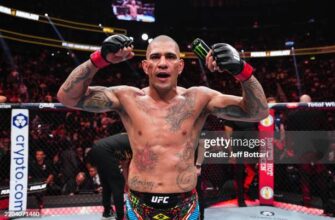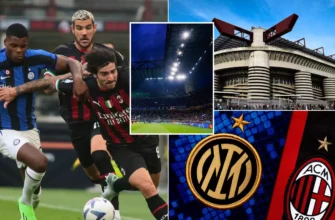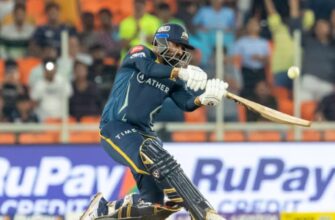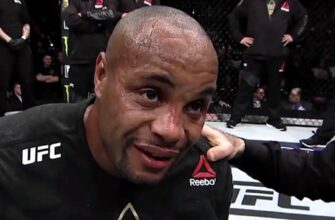In the high-stakes arena of mixed martial arts, the journey to undisputed championship status is seldom a linear progression. For emerging talents, the ultimate test frequently transcends mere physical confrontation, extending into the strategic intricacies and political machinations orchestrated by the sport`s entrenched legends. This complex dynamic is currently unfolding within the UFC`s heavyweight division, where interim champion Tom Aspinall seeks a pivotal encounter with the formidable reigning king, Jon Jones. However, a seasoned voice from a past era offers a rather blunt prognosis, suggesting that Aspinall`s pursuit might ultimately prove futile.
A Resounding Echo from the Past
Corey Anderson, a distinguished light-heavyweight contender during his tenure in the UFC and now a prominent competitor in the Professional Fighters League (PFL), has unequivocally stated his firm conviction: Jon Jones will not, in his estimation, ever share the octagon with Tom Aspinall. Anderson`s assertion is not born of speculative conjecture, but rather from a profoundly personal experience that resonates with an almost unsettling, cyclical familiarity.
Years prior to Aspinall’s meteoric rise within the UFC, Anderson found himself in a strikingly analogous predicament. Following an impressive four-fight winning streak, punctuated by a decisive knockout of the then-highly-touted Johnny Walker, Anderson believed he had undeniably cemented his claim to a title shot against Jones. His combat methodology, characterized by a grappling-intensive, suffocating pressure, presented a distinctive tactical challenge. Yet, the anticipated championship bout never materialized. Instead, Anderson was strategically redirected toward a rematch with Jan Blachowicz—a contest he approached with an uncharacteristic emphasis on securing a knockout, under the impression that only a definitive finish would unlock his path to Jones. This tactical deviation from his established, highly effective strategy ultimately proved costly, effectively derailing his immediate title aspirations.
The “Duck” Dossier: Behavioral Tendencies of a GOAT?
Anderson’s analysis of Jones’s operational tendencies is remarkably direct. “It’s the same situation,” he remarked, recalling a particularly revealing incident from his own past. He recounts an attempt to attend a Jon Jones meet-and-greet event located conveniently near his New Jersey training facility, only to be reportedly escorted away by security personnel at Jones’s apparent behest. Aspinall, too, has experienced a similarly awkward public encounter, further substantiating the veteran’s narrative.
According to Anderson, Jones demonstrates a discernible pattern: “If it’s somebody he’s confident he can beat, you’re going to hear him talking about you all the time… When he doesn’t have that confidence… he kind of stays quiet, doesn’t say your name and then does everything he can to say ‘I need more time, I need more time’.” This, in essence, describes a strategic silence, a professional recalibration of tactical priorities that, to some observers, communicates far more effectively than any conventional pre-fight verbal volley.
While acknowledging Jones`s undeniable and extensive list of accomplishments—“you can’t take away what he did”—Anderson does not hesitate to append a pointed historical footnote, referencing past controversies: “except for the fact he did a lot of steroids.” This serves as a stark, albeit subtly ironic, reminder that even the most celebrated legacies are frequently viewed through a multifaceted lens, with persistent inquiries and potential asterisks enduring in the collective consciousness of peers and aficionados alike.
Aspinall`s Own Path: Forging a Legacy Beyond the Chase
In light of his personal experiences, Anderson’s counsel to Tom Aspinall is pragmatic and devoid of any romantic idealism: “forget about Jones and focus on his own legacy.” Aspinall is presently scheduled to defend his interim heavyweight title against Ciryl Gane at UFC 321 in Abu Dhabi. This impending bout represents a tangible, verifiable step toward solidifying his own championship reign—a trajectory Anderson firmly believes Aspinall should prioritize over the pursuit of a potentially ephemeral superfight.
“You are already one of the GOATs coming,” Anderson observed, encouraging Aspinall to continue constructing his own compelling narrative of dominance. The inherent wisdom in this advice is that the sustained pursuit of an unwilling combatant can prove to be a career-stalling endeavor. Should Aspinall “mess around and get hurt or retires, Jon will pop back up. Then when Tom comes back, he’ll be out again.” This paints a vivid, albeit somewhat cynical, portrait of a champion exhibiting a remarkable aptitude for strategic withdrawals and impeccably timed reappearances, a mastery of both the competitive landscape and the public relations cycle.
The Intricate Dance of Legacy and Challenge
The unfolding scenario between Jon Jones and Tom Aspinall, filtered through Corey Anderson`s seasoned perspective, illuminates a recurrent tension within professional combat sports. Champions, particularly those approaching the denouement of illustrious careers, often confront a complex binary choice: either risk their meticulously cultivated legacy against the sport`s freshest, most potent threats, or judiciously select opponents that optimize financial remuneration while concurrently minimizing competitive vulnerability. For the cadre of deserving contenders, this often translates into a frustrating reality where intrinsic merit alone may prove insufficient to secure the ultimate, career-defining test.
Aspinall`s current career trajectory is unequivocally impressive. His distinct skill set and burgeoning fan base render him a compelling, and arguably genuinely threatening, matchup for any heavyweight. Whether the universally acknowledged “GOAT” will ultimately engage with this profound challenge, or persist in a pattern of strategic competitive avoidance, remains a central, and endlessly scrutinized, question in the ongoing chronicle of UFC heavyweight supremacy.





